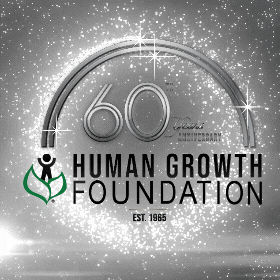兒童生長激素缺乏症
激素是由腺體和身體其他器官中的特殊細胞所產生的化學物質;大多數荷爾蒙是由內分泌腺細胞產生的。這些激素的產生量非常小,會被釋放到血液中,並到達「目標器官」或組織,在那裡發揮作用。
有幾種荷爾蒙參與調節生長。有些直接作用於目標器官,而有些則透過觸發其他激素的產生來發揮作用,這些激素會激活生長所需的特定器官功能。這個精心調整的系統可能會以多種方式發生故障,導致異常生長。
腦下垂體通常被稱為主腺,因為它產生多種控制其他腺體功能的荷爾蒙。它位於顱骨中部,位於稱為下丘腦的大腦部分下方。腦下垂體有兩個不同的部分:前葉和後葉。腦下垂體分泌激素,以回應來自下視丘(與腦下垂體相連的大腦部分)的化學訊息。
生長激素是一種腦下垂體前葉激素,其主要作用是促進身體組織的生長。其他腦下垂體前葉激素透過其他腺體間接影響生長。
這些其他荷爾蒙包括:
促甲狀腺激素 (TSH) – 促使甲狀腺產生甲狀腺激素,調節身體新陳代謝,對正常生長至關重要。
促腎上腺皮質激素 (ACTH) – 導致腎上腺產生皮質醇(壓力荷爾蒙)和其他使身體能夠對壓力做出反應的荷爾蒙。過多的皮質醇會導致兒童生長障礙。
黃體生成素 (LH) 和卵泡刺激素 (FSH) – 導致性腺(卵巢或睪丸)產生性激素,這是青少年性發育和青春期伴隨的生長突增所必需的。 腦下垂體後葉產生的主要荷爾蒙稱為加壓素或抗利尿激素 (ADH)。它控制通過腎臟的水輸出。
生長激素缺乏的原因
生長激素缺乏症可能單獨發生,也可能與一種或多種其他腦下垂體激素缺乏症同時發生。它可能是全部(不產生生長激素)或部分(產生一些生長激素,但不足以支持正常生長)。
腦下垂體機能減退症可能是先天性的,是由孩子出生前腦下垂體或下視丘的異常形成引起的,也可能是後天性的,是由於出生期間或出生後腦下垂體或下視丘的損傷引起的。先天性腦下垂體功能低下症在出生時就已存在,但可能幾個月後才顯現出來。後天性腦下垂體機能減退症可能在嬰兒期或兒童期的任何時候變得明顯,並且可能在嚴重頭部受傷或腦膜炎或腦炎等嚴重疾病後發生。許多後天性腦下垂體功能減退症的病例是由一種稱為顱咽管瘤的腫瘤引起的。這種腫瘤可能會壓迫下視丘或腦下垂體,導致一種或多種荷爾蒙缺乏。缺乏症包括手術切除腫瘤,這通常會導致永久性腦下垂體功能低下。
有時無法確定腦下垂體功能低下的原因,或者如果懷疑有原因,則可能很難證明。研究人員正在嘗試更多地了解生長激素缺乏和腦下垂體功能低下的原因。
生長激素缺乏症的診斷
患有生長激素缺乏症的孩子通常身材矮小,面容不成熟,體格胖乎乎的。身體各部位的生長速度緩慢,因此孩子的比例保持正常。智力正常。如果孩子的身高被繪製在生長圖表上,那麼它看起來會趨於平穩並偏離孩子既定的生長曲線。如果長期存在生長障礙,孩子可能比同齡的其他孩子矮得多。這就是為什麼生長圖表上繪製的身高和體重測量值如此重要——越早發現可治療的生長問題,孩子在整個童年時期保持正常身高並充分發揮生長潛力的機會就越大。
任何身高僅與兒童一樣高的兒童 任何身高僅與兩歲或兩歲以上兒童一樣高的兒童,或偏離先前正常生長曲線的兒童,都應接受醫生的評估。兒科內分泌科醫生是專門治療患有生長和荷爾蒙問題的兒童的醫生。根據情況,醫生可能會在六到十二個月的時間內對孩子進行測量,以準確地確定孩子的生長速度。年輕兩歲或兩歲以上或偏離先前正常生長曲線的人應由醫生進行評估。兒科內分泌科醫生是專門治療患有生長和荷爾蒙問題的兒童的醫生。根據情況,醫生可能會在六到十二個月的時間內對孩子進行測量,以準確地確定孩子的生長速度。
評估首先收集有關親屬身高以及家庭中是否存在任何健康問題的資訊。應提及家庭成員的青春期早期或晚期(性發育和生長突增)史。醫生會想了解母親的懷孕、臨盆和分娩狀況。應收集孩子從出生起的所有身高和體重測量結果,以便醫生可以將它們繪製在生長圖上。醫生會詢問有關孩子的一般健康和營養狀況、既往疾病、受傷和壓力的問題。
將進行徹底的身體檢查,並對手和手腕進行 X 光檢查,以了解骨骼發育與身高和實際年齡的比較。可能會抽取少量血液來尋找甲狀腺激素缺乏和腎臟、骨骼和胃腸道(胃和腸)疾病的證據。可以測量血液中胰島素樣生長激素-I (IGF-I) 的量。 IGF-I是生長過程中的「中間人」。生長激素刺激肝臟和其他身體組織產生 IGF-I,然後作為血液中的生長激素與細胞內促進生長的機制之間的連結。血液中 IGF-I 的含量可以間接測量生長激素的含量。
這種簡單的評估通常為醫生提供足夠的資訊來確定生長問題的原因或確定不存在生長問題。如果醫生懷疑可能有腦下垂體問題,則需要進一步檢查。一系列血液檢查可以測量血液中荷爾蒙的濃度以及腦下垂體對各種刺激的反應能力。這些測試可以在診所或短暫住院期間進行。
生長激素缺乏症的診斷比較困難,因為腦下垂體會突然產生生長激素。這意味著單一隨機血液樣本中的生長激素水平可能非常低。檢測生長激素缺乏症的一種方法是給孩子服用一種物質,該物質會導致正常兒童大量釋放生長激素,並測量一段時間內獲得的多個血液樣本中生長激素的含量。由於任何孩子可能對某一天的任何特定測試都沒有反應,因此可能需要不只一種刺激來評估孩子產生生長激素的能力。已鑑定出幾種生長激素刺激劑。這些包括劇烈運動和幾種化學物質和藥物(胰島素、精氨酸、升糖素、左旋多巴、可樂定)。
另一種測試生長激素分泌的方法是將孩子送入醫院,並測量夜間睡眠時甚至整個 24 小時內採集的血液樣本中生長激素的含量。由於大約三分之二的生長激素產生量發生在深度睡眠期間,因此該測試可以更好地反映兒童腦下垂體正常產生的生長激素量。
如果多項測試顯示不存在生長激素或產生的生長激素量不足以支持正常生長,則可診斷生長激素缺乏症。正在進行大量研究以開發更準確、更可靠的診斷生長激素缺乏的方法。隨著研究人員更了解可能導致部分生長激素缺乏的情況,甚至生長激素缺乏的定義也在修訂。
生長激素缺乏症的治療
生長激素缺乏症可以透過注射生長激素來治療。大多數兒童每天接受注射;其他人每週收到六次;有些人每週接受 3 次治療。 * 治療開始後,生長速度通常會迅速加快,孩子和家長可能會在 3 至 4 個月內注意到這一點。這種高於正常水平的成長率會隨著時間的推移而緩慢下降,但仍高於不治療的情況。許多家長注意到治療開始後孩子的食慾增加,體脂肪減少。
生長激素缺乏症的治療通常需要數年時間,直到兒童達到可接受的成年身高或達到最大生長潛力。與其他情況一樣,兒童和家長可能會變得不耐煩,想要看到更快或更令人印象深刻的治療結果。即使治療按計劃進行,他們也可能會變得灰心喪志。重要的是要記住,成長是一個緩慢的過程,需要數月的時間來衡量;那些期望一夜之間長大的孩子,當他們開始缺乏時就會失望。您孩子的醫生將與您討論現實的短期和長期治療期望。
如果測試發現其他荷爾蒙缺乏,可以使用藥物來替代;當發現甲狀腺激素、皮質醇和性激素缺乏時,可以輕鬆施用。依指示服用這些荷爾蒙非常重要,因為只有當所有荷爾蒙都以適當的量存在時,才能發生正常的生長。良好的營養和充足的休息對於所有兒童的正常成長都很重要。
人類生長激素的來源
直到最近,人類生長激素的唯一來源是屍檢時獲得的死者腦下垂體。 1985 年 4 月,幾名年輕人死於一種非常罕見的病毒性疾病,這種疾病可能是透過他們多年前接受的腦下垂體生長激素傳播的,隨後,美國和許多外國的腦下垂體生長激素被停止銷售。幸運的是,採用重組DNA技術生產的第一種生物合成生長激素已進入最後的測試階段,並於1985年10月被美國食品和藥物管理局批准用於治療生長激素缺乏的兒童。
生物合成生長激素以粉末形式裝在無菌小瓶中。家長和孩子將學習如何將粉末混合成溶液並進行注射。只要有生長潛力且孩子對治療有反應,治療就會持續下去。透過早期診斷和對治療的良好反應,生長激素缺乏症的兒童有望達到正常的成人身高。
身材矮小的心理面
我們的社會非常重視身高。比同齡人矮的孩子有時會遇到問題,因為玩伴和老師對待他們就像他們更年輕,而不僅僅是更小一樣。父母也往往會這樣做,降低對孩子的期望。這些孩子可能不會表現出他們的年齡,因為這不是他們的期望。戲弄和謾罵可能讓人難以接受。與老師和同學進行坦誠、開放的討論可能有助於解決其中一些問題。
為生長激素缺乏症的孩子提供情感支持並強調孩子的許多優秀和有價值的特徵非常重要,這樣孩子的身材就不會限制他的視野。有關身材矮小的社會心理適應的更多信息,可以從矮個子兒童的父母以及生長診所的醫生、護士和心理學家那裡了解。
對未來的希望
生物合成生長激素可無限量用於所有生長激素缺乏症兒童的缺乏。隨著研究的持續,生長激素的替代品可能會出現。這些可能包括生長激素釋放因子 (GHRF),一種指導腦下垂體產生生長激素的下丘腦化學物質,以及將生長激素與線性生長聯繫起來的 IGF-I。
為了更好地了解生長激素缺乏的原因,並開發更準確的診斷方法,正在進行大量研究。由於多年來所做的研究以及今天仍在繼續的研究,許多患有生長激素缺乏症的兒童有望達到正常身高。






